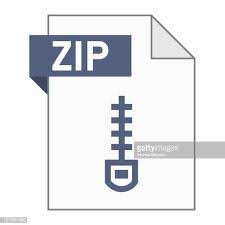Description
Part 1. Declaring ‘Dog’ and ‘DogDriver’ classes
In this Lab, you will implement a Java class, called ‘Dog’, which can be used to represent dog objects
in an application to be used, for example, in an animal hospital. You will then test your class by
implementing another class, called ‘DogDriver’.
To start, Open Eclipse and create a new project and name it ‘DogApplication’ then follow the
following steps:
1. Create a class called ‘Dog’ inside the ‘DogApplication ‘ project.
2. Declare the following two instance variables in ‘Dog’. Remember that instance variables
must be declared as private.
a. name (of type String).
b. age (of type int).
3. Declare a constructor for the ‘Dog’ class that takes two input parameters and uses these
input parameters to initialize the instance variables.
4. Now create another class in your project and call it ‘DogDriver’. You will use this class to
test the ‘Dog’ class. The ‘DogDriver’ class should include only the main method.
5. Inside the driver’s main method, declare two variables of type ‘Dog’ and call them ‘myDog’
and ‘yourDog’, then, assign these two variables to two instances of ‘Dog’ with any values of
your choice for name and age. (Note: you have to use new to instantiate the dog objects).
6. Go back to the ‘Dog’ class and implement the ‘toString’ method and then call this method
from ‘DogDriver’ to print the dogs’ information.
CHECKPOINT 1: Make sure the information about your dogs is printed
correctly and show the output to the instructor.
Part 2. Adding more methods to the ‘Dog’ class.
In this part, you are going to add (and test) more functionality to your ‘Dog’ class.
7. Assume that, in the ‘DogDriver’ class, you tried to print only the names of the two
dogs that you created in step #5 using the following statements:
System.out.println(myDog.name); System.out.println(yourDog.name);
Write down the error message you get when you type these statements?
8. In order to be able to print only the dog name, go back to the ‘Dog’ class and
implement a getter method for the dog’s name instance variable.
9. In the DogDriver class, print the dogs’ names.
10. Assume now you want to change the age of ‘myDog’ using the following statement:
myDog.age = 20;
11. The previous statement will not work. You must implement a setAge method in
order to be able to change the dog’s age. So, go back to the ‘Dog’ class and
implement the setAge method. Then, call the setAge method from the
‘DogDriver’ class two times to change the age of both dogs.
12. Call the toString() method to print the dogs’ information again to make sure that the
ages are correctly changed.
13. Draw the UML diagram of the Dog class.
CHECKPOINT 2: Show the output of your completed program and your
UML to either the instructor.
Part 3. Upload your work to D2L
1. Right click on the src folder and choose the Export… option.
2. When asked to choose an Export Wizard, double click on General.
3. Then click Archive File and Next. Make sure the radio button next to Save in zip format is
selected.
4. Use the Browse function to navigate to the H: drive, then make up a name for your file. You
can name your archive file anything but it helps me find your work if you use your last name
and the name of the lab so choose something like GhanemLab03. Click Finish.
5. Now login to D2L. From the home page, click on the Assessments drop down menu and
select Assignments.
6. From the Assignment Submission Folders page, select the Lab3 drop box.
7. Click on Add a File, browse for the archive (.zip) file you created with Eclipse and Upload it.
You can add a note if you like but you don’t have to. Click Submit to finish up.
8. Draw the UML on a word document and upload that document to the Lab 3 drop box on
D2L.
NOTE: To receive credit for this lab assignment, demonstrate your
solution (even if it is partially completed) to the instructor before you
leave.

